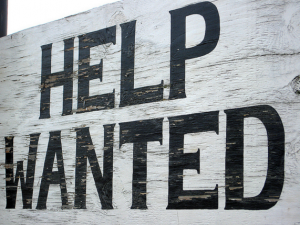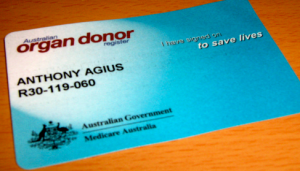The world is full of needy people; they need places to live, food to eat, medical care to combat biological threats, and, if you ask certain populations in the first world, a college education. Plenty of ink has been spilled over the matter of how to best meet the needs of others, typically with a focus on uniquely needy populations, such as the homeless, poverty-stricken, sick, and those otherwise severely disadvantaged. In order to make meaningful progress in such discussions, there arises the matter of precisely why - in the functional sense of the word – people are interested in helping others, as I believe the answer(s) to that question will be greatly informative when it comes to determining the most effective strategies for doing so. What is very interesting about these discussions is that the focus is frequently placed on helping others altruistically; delivering benefits to others in ways that are costly for the person doing the helping. The typical example of this involves charitable donations, where I would give up some of my money so that someone else can benefit. What is interesting about this focus is that our altruistic systems often seem to face quite a bit of pushback from other parts of our psychology when it comes to helping others, resulting in fairly poor deliveries of benefits. It represents a focus on the means by which we help others, rather than really serving to improve the ends of effective helping.
For instance. this sign isn’t asking for donations
As a matter of fact, the most common ways of improving the lives of others doesn’t involve any altruism at all. For an alternative focus, we might consider the classic Adam Smith quote pertaining to butchers and bakers:
But man has almost constant occasion for the help of his brethren, and it is in vain for him to expect it from their benevolence only. He will be more likely to prevail if he can interest their self-love in his favour, and show them that it is for their own advantage to do for him what he requires of them. Whoever offers to another a bargain of any kind, proposes to do this. Give me that which I want, and you shall have this which you want, is the meaning of every such offer; and it is in this manner that we obtain from one another the far greater part of those good offices which we stand in need of. It is not from the benevolence of the butcher, the brewer, or the baker that we expect our dinner, but from their regard to their own interest.
In short, Smith appears to recommend that, if we wish to effectively meet the needs of others (or have them meet our needs), we must properly incentivize that other-benefiting behavior instead of just hoping people will be willing to continuously suffer costs. Smith’s system, then, is more mutualistic or reciprocal in nature. There are a lot of benefits to trying to use these mutualistic and reciprocally-altruistic cognitive mechanisms, rather than altruistic ones, some of which I outlined last week. Specifically, altruistic systems typically direct benefits preferentially towards kin and social allies, and such a provincial focus is unlikely to deliver benefits to the needy individuals in the wider world particularly well (e.g., people who aren’t kin or allies). If, however, you get people to behave in a way that benefits themselves and just so happen to benefit others as a result, you’ll often end up with some pretty good benefit delivery. This is because you don’t need to coerce people into helping themselves.
So let’s say we’re faced with a very real-world problem: there is a general shortage of organs available for people in need of transplants. What cognitive systems do we want to engage to solve that problem? We could, as some might suggest, make people more empathetic to the plight of those suffering in hospitals, dying from organ failure; we might also try to convince people that signing up as an organ donor is the morally-virtuous thing to do. Both of these plans might increase the number of people willing to posthumously donate their organs, but perhaps there are much easier and effective ways to get people to become organ donors even if they have no particular interest in helping others. I wanted to review two such candidate methods today, neither of which require that people’s altruistic cognitive systems be particular engaged.
The first method comes to us from Johnson & Goldstein (2003), who examine some cross-national data on rates of organ donor status. Specifically, they note an oddity in the data: very large and stable differences exist between nations in organ donor status, even after controlling for a number of potentially-relevant variables. Might these different rates exist because of people’s preferences for being an organ donor varying markedly between countries? It seems unlikely, unless people in Germany have an exceedingly unpopular opinion toward being an organ donor (14% are donors, from the figures cited), while people in Sweden are particularly interested in it (86%). In fact, in the US, support for organ donation is at near ceiling levels, yet a large gap persists between those who support it (95%) and those who indicated on a driver’s license they were donors (51% in 2005; 60% in 2015) or who had signed a donor card (30%). If it’s not people’s lack of support for such a policy, what is explaining the difference?
A poor national sense for graphic design?
Johnson & Goldstein (2003) float a simple explanation for most of the national differences: whether donor programs were opt-in or opt-out. What that refers to is the matter of, assuming someone has made no explicit decision as to what happens to their organs after they die, what decision would be treated as the default? In opt-in countries (like Germany and the US), non-donor status would be assumed unless someone signs up to be a donor; in opt-out countries, like Sweden, people are assumed to be donors unless they indicate that they do not wish to be one. As the authors report, the opt-in countries have much lower effective consent rates (on average, 60% lower) and the two groups represent non-overlapping populations. That data supplements the other experimental findings from Johnson & Goldstein (2003) as well. The authors had 161 participants take part in an experiment where they were asked to imagine they had moved to a new state. This state either treated organ donation as the default option or non-donation as the default, and participants were asked whether they would like to confirm or change their status. There was also a third condition where no default answer was provided. When no default answer was given, 79% of participants said they would be willing to be an organ donor; a percentage which did not differ from those who confirmed their donor status when it was the default (82%). However, when non-donor status was the default, only 42% of the participants changed their status to donor.
So defaults seem to matter quite a bit, but let’s assume that a nation isn’t going to change its policy from opt-in to opt-out anytime soon. What else might we do if we wanted to improve the rates of people signing up to be an organ donor in the short term? Eyting et al (2016) tested a rather simple method: paying people €10. The researchers recruited 320 German university students who did not currently have an organ donor card and provided them the opportunity to fill one out. These participants were split into three groups: one in which there was no compensation offered for filling out the card, one in which they would personally receive €10 for filling out a card (regardless of which choice they picked: donor or non-donor), and a final condition in which €10 would be donated to a charitable organization (the Red Cross) if they filled out a card. No differences were observed between the percentage of participants who filled out the card between the control (35%) and charity (36%) conditions. However, in the personal benefit group, there was a spike in the number of people filling out the card (72%). Not all those who filled out the cards opted for donor status, though. Between conditions, the percentage of people who both (a) filled out the card and (b) indicated they wanted to be a donor where about 44% in the personal payment condition, 28% in the control condition, and only 19% in the charity group. Not only did the charity appeal not seem particularly effective, it was even nominally counterproductive.
“I already donated $10 to charity and now they want my organs too?!”
Now, admittedly, helping others because there’s something in it for you isn’t quite as sexy (figuratively speaking) as helping because you’re driven by an overwhelming sense of empathy, conscience, or simply helping for no benefit at all. This is because there’s a lower signal value in that kind of self-beneficial helping; it doesn’t predict future behavior in the absence of those benefits. As such, it’s unlikely to be particularly effective at building meaningful social connections between helpers and others. However, if the current data is any indication, such helping is also likely to be consistently effective. If one’s goal is to increase the benefits being delivered to others (rather than building social connections), that will often involve providing valued incentives for the people doing the helping.
On one final note, it’s worth mentioning that these papers only deal with people becoming a donor after death; not the prospect of donating organs while alive. If one wanted to, say, incentivize someone to donate a kidney while alive, a good way to do so might be to offer them money; that is, allow people to buy and sell organs they are already capable of donating. If people were allowed to engage in mutually-beneficial interactions when it came to selling organs, it is likely we would see certain organ shortages decrease as well. Unfortunately for those in need of organs and/or money, our moral systems often oppose this course of action (Tetlock, 2000), likely contingent on perceptions about which groups would be benefiting the most. I think this serves as yet another demonstration that our moral sense might not be well-suited for maximizing the welfare of people in the wider social world, much like our empathetic systems don’t.
References: Eyting, M., Hosemann, A., & Johannesson, M. (2016). Can monetary incentives increase organ donations? Economics Letters, 142, 56-58.
Johnson, E. & Goldstein, D. (2003). Do defaults save lives? Science, 132, 1338-1339.
Tetlock, P. (2000). Coping with trade-offs: Psychological constraints and political implications. In Elements of Reason: Cognition, Choice, & the Bounds of Rationality. Ed. Lupia, A., McCubbins, M., & Popkin, S. 239-322.



